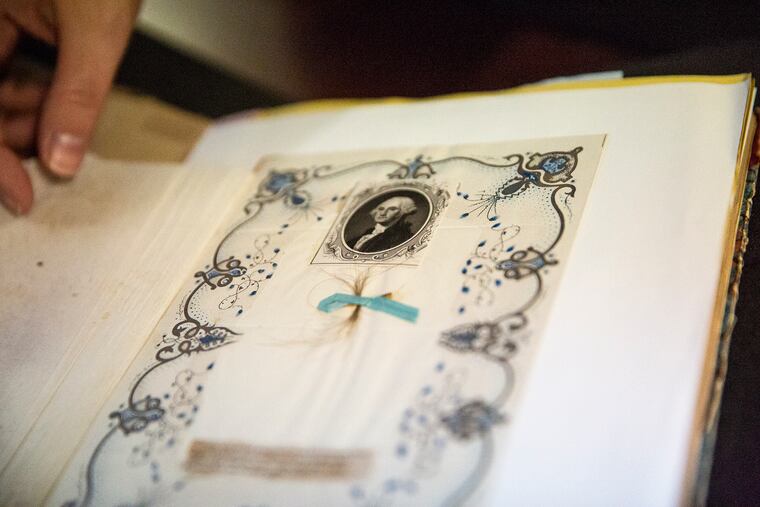Academy of Natural Sciences curator of presidents’ hair will exhume the odd lot Wednesday
Curator Robert McCracken Peck has a new book out: "Specimens of Hair: The Curious Collection of Peter A. Browne"

An oddball collection of animal and human hair assembled by an obsessive 19th-century naturalist — his "Collection of Pile," as he referred to it — was at one time deemed worthless by the Academy of Natural Sciences, despite including samples from 13 of the first 14 presidents.
The collection was destined for the garbage when Robert McCracken Peck chanced upon it in 1976, each lock, tress, and clump carefully mounted and notated in a 12-volume set of books.
Peck, now a senior fellow at the academy, was just beginning his curatorial career when he saved the hairy accumulation from the trash heap.
His new book, Specimens of Hair: The Curious Collection of Peter A. Browne, (Blast Books), tells the story of how it came to be. On Wednesday, Peck will give a talk about it at the academy. Five of the volumes, including the one with the presidents' hair, will go on public display that same day, changing pages every three weeks until March.
>> READ MORE: Our critics' picks for the best museum exhibits, concerts, and other entertainment this fall
"This is a quirky field, and it wasn't a book that I was planning to write," Peck says. "But I must say once I got into it I found it fascinating. The collection is very rich and took me in all kinds of interesting directions."
Peck will have copies of his book available at the talk, a few weeks before they hit stores. The collection was first exhibited briefly during the presidential election of 2008. A second exhibition garnered international press attention during the 2016 Democratic National Convention.
Hair’s how it started
Browne, a 19th-century Philadelphia lawyer and naturalist, began studying hair and fur with an in-depth analysis of sheep's wool, instigating a lifelong pursuit.
By the time of his death in 1869, he had amassed a collection of hair that spanned countless species of animals as well as humans covering a range of ages, backgrounds, and ethnic groups. In addition to the presidential tresses, Browne's collection included hair from well-known artists, writers, and scientists.
As unsettling and racially insensitive as the notion might seem today, Peck says the collection still has scientific value, especially as new technologies have evolved. Historical DNA from ethnic groups that have long since intermarried, for example, "could never be obtained today."
The albums are exhibition-worthy beyond their curiosity value. Each page is as eccentric as its creator, with different backgrounds, portraits, or decorative elements for every specimen.
"He really turned them into works of art," says Peck, whose own background is in art and American history as well as biology and environmental sciences. "Unfortunately today, art, science, literature, and humanities all get put into separate niches, but back in the 19th century they were all very closely intertwined. Browne is a perfect example of someone who devoted his life to finding out interesting things about all fields of natural history and humanity."
As Peck explains, Browne's fascination wasn't nearly as odd-seeming as it is today. The hair of family, friends, and loved ones was routinely collected, cherished, and turned into art. During the Civil War, locks of hair were traded between those heading off to battle and those left behind. The Mütter Museum's "Woven Strands" exhibit last winter explored the use of human hair as decorative art.
Browne's letters reveal no resistance from those asked to contribute — though Millard Fillmore forgot to enclose his promised strands, triggering a blistering rebuke from Browne ("I attribute your default to deficiency in your early education," he chided the former president) and leaving the sole gap in his presidential collection.
Having been connected with Browne's collection for so many years, Peck holds a special place in his heart for it — one that he hopes his audience at the academy, and future readers, will come to share. "Hair creeps people out today," he admits. "I think once they hear my talk or read my book, they'll find how fascinating and sometimes beautiful it can be."